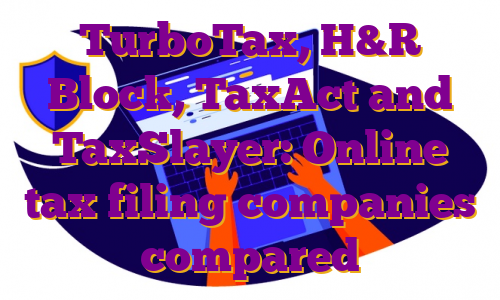Medicare health insurance premiums can add up to major bucks — especially if you’re upper-income, married, and both you and your spouse are paying. This column lists the 2022 Medicare health insurance premium amounts, explains why decisions made on your 2021 Form 1040 will determine your premiums for 2023, and more. Here goes. Medicare Part B coverage is commonly called Medicare medical insurance or original Medicare. Part B mainly covers doctors and outpatient services, and Medicare-eligible individuals must pay monthly premiums for this benefit.
The monthly premium for the current year depends on your modified adjusted gross income (MAGI), as reported on your Form 1040 for two years earlier. MAGI means the adjusted gross income (AGI) number shown on your Form 1040 plus any tax-exempt interest income. Your 2023 premiums depend on your 2021 MAGI, as reported on your 2021 Form 1040, which you may not have filed yet. That means that things you do or don’t do on that return can impact your 2023 premiums. This is especially true if you’re self-employed or an owner of a pass-through business entity (LLC, partnership, or S corporation). 2022 Part B premiums For 2022, most individuals will pay the base Part B premium of $170.10 per covered person ($2,041.20 if you pay premiums for the full year). Higher-income individuals must pay a surcharge on top of the base premium for Part B coverage. For 2022, surcharges apply if you: (1) filed as a single for 2020 and reported MAGI for that year in excess of $91,000 or (2) filed jointly for 2020 and reported MAGI for that year in excess of $182,000. The Feds call the surcharge an Income Related Monthly Adjustment Amount (IRMAA), but we will call it what it is: a surcharge. For 2022, Part B monthly premiums, including surcharges if applicable, for each covered individual are as follows. See more info here. * The $170.10 base premium with no surcharge ($2,041.20 if you pay premiums for the full year) if your 2020 MAGI was no more than $91,000 and you filed as a single for that year or no more than $182,000 if you filed a joint return. * $238.10 ($2,857.20 for the full year) if your 2020 MAGI was between $91,001 and $114,000 and you filed as a single or between $182,001 and $228,000 if you filed a joint return. * $340.20 ($4,082.40 for the full year) if your 2020 MAGI was between $114,001 and $142,000 and you filed as a single or between $228,001 and $284,000 if you filed a joint return. * $442.30 ($5,307.60 for the full year) if your 2020 MAGI was between $142,001 and $170,000 and you filed as a single or between $284,001 and $340,000 if you filed a joint return. * $544.30 ($6,531.60 for the full year) if your 2020 MAGI was between $170,001 and $500,000 and you filed as a single or between $340,001 and $750,000 if you filed a joint return. * The maximum of $578.30 ($6,939.60 for the full year) if your 2020 MAGI was above $500,000 and you filed as a single or above $750,000 if you filed a joint return. Key point: The 2022 premiums are significantly higher than the 2021 amounts. We don’t yet know the numbers for 2023, but they will probably be considerably higher than the 2022 amounts. Ugh. Paying Part B premiums Part B premiums, including any surcharge, are withheld from your Social Security benefit payments and are shown on the annual Form SSA-1099 sent to you by the Social Security Administration (SSA). Premiums for Medicare Advantage coverage (Medicare Part C) You can get your Medicare Part B benefits through the government, for the monthly premium costs listed above, or you can get your benefits through a so-called Medicare Advantage plan offered by a private insurance company that contracts with Medicare to provide benefits under rules established by Medicare. Medicare Advantage plans are also sometimes called Medicare Part C. Medicare Advantage basics When you sign up for a Medicare Advantage plan, you still must pay the standard Part B premium, including any applicable surcharge for higher-income folks, and you still get the standard Part B coverage. The advantage is that the Medicare Advantage plan will deliver benefits beyond what the government gives you under Part B, such as prescription drug coverage, dental care, and vision care. You may be charged an additional monthly premium for the Medicare Advantage plan, but depending on where you live, some plans don’t charge anything extra. The additional premium, if any, depends on the plan you select and where you live. With a Medicare Advantage plan, you are usually limited to a defined provider network, which you may view as a disadvantage. Paying Medicare Advantage premiums When you have a Medicare Advantage plan, the standard Part B premiums, including any surcharge for higher-income folks, will still be withheld from your Social Security benefit payments and will still be shown on the annual Form SSA-1099 sent to you by the SSA. If you pay an extra premium for your Medicare Advantage coverage, you can pay it like any other bill or arrange to have it withheld from your Social Security benefit payments. Most people choose the first option because it avoids bureaucracy. Premiums for Medicare Part D prescription drug coverage Medicare Part D premiums are for private prescription drug coverage. Base premiums vary depending on the plan. Higher-income individuals must pay a surcharge on top of the base premium. For 2022, surcharges apply to individuals who: (1) filed as singles for 2020 and reported MAGI for that year in excess of $91,000 or (2) filed joint returns for 2020 and reported MAGI in excess of $182,000. The 2022 monthly Part D surcharges for each covered person are as follows, according to the Medicare website. * Zero if your 2020 MAGI was no more than $91,000 and you filed as a single for that year or no more than $182,000 if you filed a joint return. * $12.40 ($148.80 for the full year) if your 2020 MAGI was between $91,001 and $114,000 and you filed as a single or between $182,001 and $228,000 if you filed a joint return. * $32.10 ($385.20 for the full year) if your 2020 MAGI was between $114,001 and $142,000 and you filed as a single or between $228,001 and $284,000 if you filed a joint return. * $51.70 ($620.40 for the full year) if your 2020 MAGI was between $142,001 and $170,000 and you filed as a single or between $284,001 and $340,000 if you filed a joint return. * $71.30 ($855.60 for the full year) if your 2020 MAGI was between $170,001 and $500,000 and you filed as a single or between $340,001 and $750,000 if you filed a joint return. * The maximum of $77.90 ($934.80 for the full year) if your 2020 MAGI was above $500,000 and you filed as a single or above $750,000 if you filed a joint return. Key point: The 2022 surcharges are barely above the 2021 amounts. Good. We don’t yet know the numbers for 2023, but we can hope for more good news. Fingers crossed. Paying Part D premiums You pay the base Part D premium, which depends on the private insurance company plan that you select, to the insurance company. Any surcharge,will be withheld from your Social Security benefit payments and reflected on the annual Form SSA-1099 sent to you by the SSA. Impact of decisions made on your 2021 Form 1040 Decisions made on your 2021 Form 1040 can affect your 2021 MAGI and, in turn, your 2023 Medicare health insurance premiums. If you’re self-employed or an owner of a pass-through business entity, you have more ways to micromanage your MAGI. For instance: * Until the due date for your 2021 Form 1040 (10/17/22 if you get an extension), you as a self-employed individual can make a bigger or smaller deductible contribution to your self-employed retirement account for the 2021 tax year. Your choice will impact your 2021 MAGI and, in turn, your 2023 Medicare health insurance premiums. * You as an owner of a pass-through business entity can (along with the other owners, if applicable) make other choices that will impact your 2021 MAGI, such as choosing to maximize or minimize depreciation deductions for the entity. Those choices will impact each owner’s 2021 MAGI and, in turn, each owner’s 2023 Medicare health insurance premiums. Deducting Medicare health insurance premiums You can combine premiums for Medicare health insurance coverages with other qualifying health care expenses for purposes of claiming the itemized federal income tax deduction for medical expenses. You can claim an itemized medical expense deduction to the extent your total qualifying expenses exceed 7.5% of your adjusted gross income (AGI). If you’re self-employed or an S corporation shareholder-employee, you can potentially claim an above-the-line deduction for health insurance premiums, including Medicare health insurance premiums. If you qualify, you don’t need to itemize to collect the tax savings. The bottom line Medicare health insurance premiums can add up to major bucks, and premiums for Part B coverage will probably increase significantly in 2023. Medicare health insurance premiums and the related tax implications have lots of moving parts, and what you do with your 2021 Form 1040 can impact your 2023 premiums. While 2023 might seem far in the future right now, it will be here before you know it. So, if you’ve not yet filed your 2021 Form 1040, keep the Medicare health insurance premium factor in mind when making decisions on that return. Sidebar No. 1: You can get hit with delayed premium surcharges For years, the IRS has had big-time data processing problems, and nothing has changed. For that reason, it can take a long time for Medicare health insurance premium surcharges for the year in question to catch up with the MAGI number reported on your Form 1040 for two years earlier — and eventually reported by the IRS to the SSA. When the SSA finally gets your MAGI number for two years earlier, it will refigure your Part B and Part D surcharges, if applicable. If prior withholding from your Social Security benefits did not cover the refigured surcharges, you will be charged the difference via additional withholdings. For example, if you extended your 2019 Form 1040, you may just now be finding out how much your actual Part B and Part D surcharges were for 2021. Any shortfall between what was actually withheld from your Social Security benefits in 2021 and what should have been withheld for that year after the SSA’s refiguring will be withheld from your 2022 benefits. You’re welcome. SIDEBAR No. 2: You can take tax-free HSA distributions to cover Medicare health insurance premiums Good news if you have a health savings account (HSA). You can take federal-income-tax-free HSA distributions to reimburse yourself for Medicare health insurance premium costs. If you take distributions during the year, fill out IRS Form 8899, Health Savings Accounts (HSAs), and include it with your Form 1040 for that year.
.


